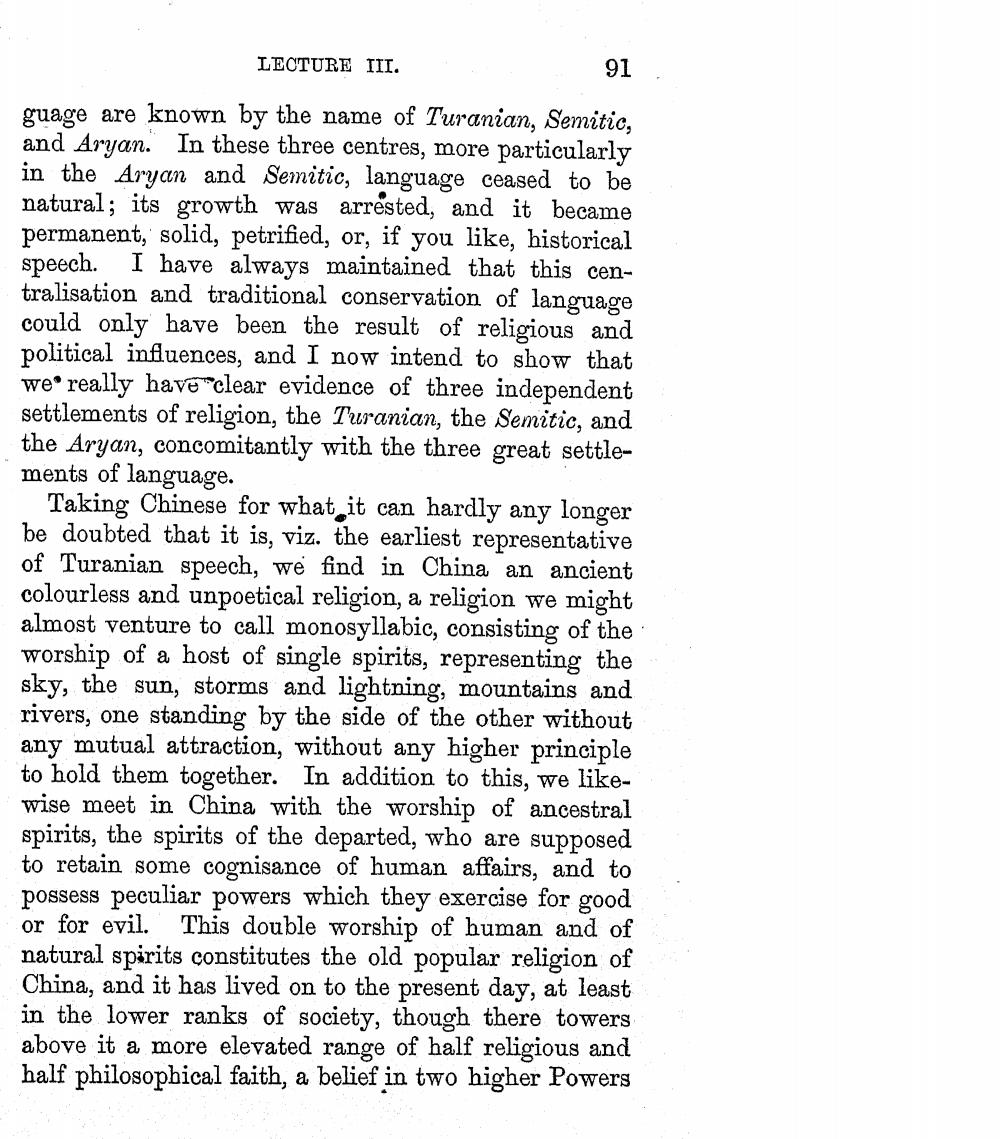________________
LECTURE III.
91
guage are known by the name of Turanian, Semitic, and Aryan. In these three centres, more particularly in the Aryan and Semitic, language ceased to be natural; its growth was arrested, and it became permanent, solid, petrified, or, if you like, historical speech. I have always maintained that this centralisation and traditional conservation of language could only have been the result of religious and political influences, and I now intend to show that we really have clear evidence of three independent settlements of religion, the Turanian, the Semitic, and the Aryan, concomitantly with the three great settlements of language.
Taking Chinese for what it can hardly any longer be doubted that it is, viz. the earliest representative of Turanian speech, we find in China an ancient colourless and unpoetical religion, a religion we might almost venture to call monosyllabic, consisting of the worship of a host of single spirits, representing the sky, the sun, storms and lightning, mountains and rivers, one standing by the side of the other without any mutual attraction, without any higher principle to hold them together. In addition to this, we likewise meet in China with the worship of ancestral spirits, the spirits of the departed, who are supposed to retain some cognisance of human affairs, and to possess peculiar powers which they exercise for good or for evil. This double worship of human and of natural spirits constitutes the old popular religion of China, and it has lived on to the present day, at least in the lower ranks of society, though there towers above it a more elevated range of half religious and half philosophical faith, a belief in two higher Powers




